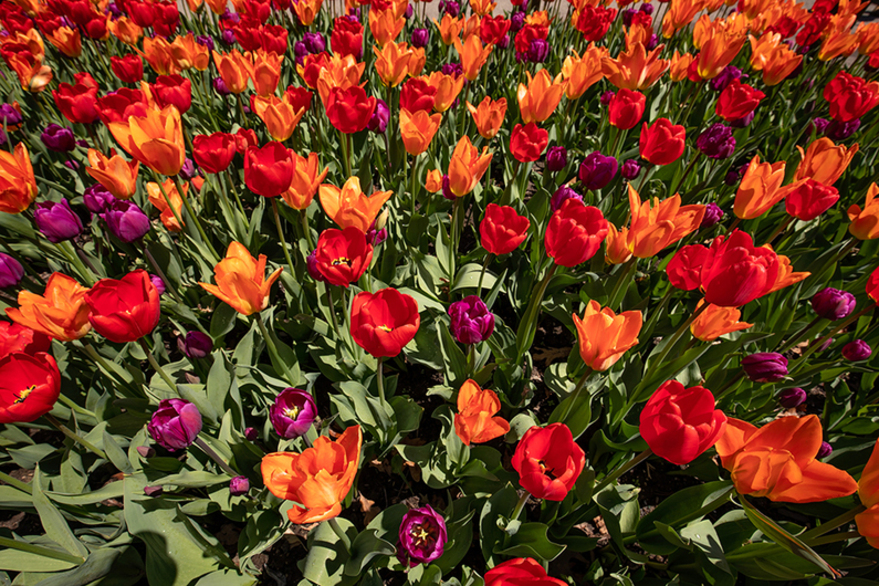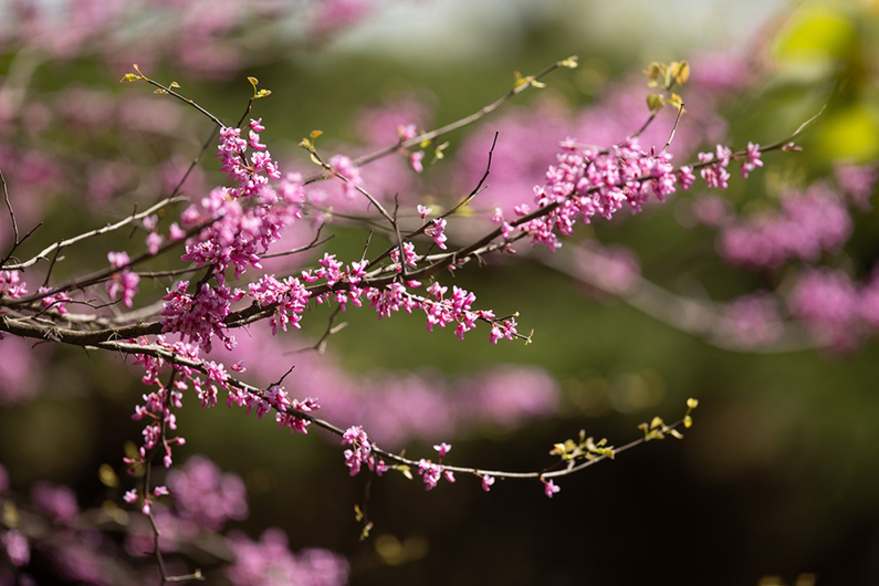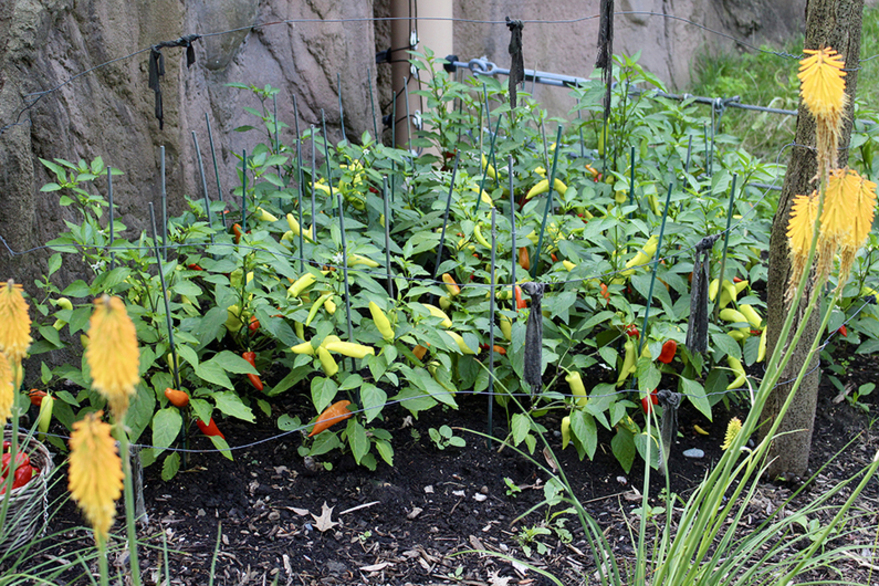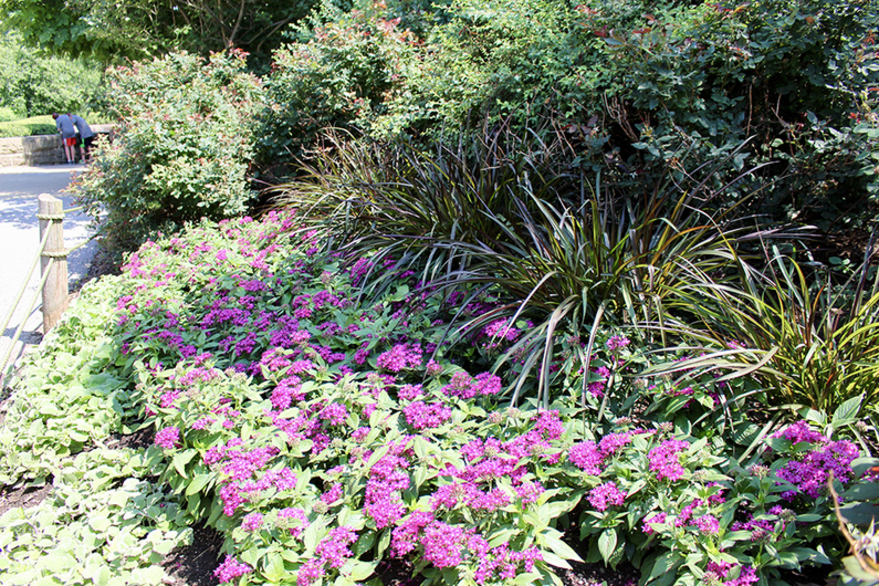As the snow begins to melt and the temperature starts to rise at Cleveland Metroparks Zoo, the horticulture team is busy planting the spring flower beds. Their hard work adds beautiful color all around the Zoo and is the result of months of preparation.

When the cold weather first hits in December and spring seems a million miles away, the horticulture team is already planning for warmer days ahead.
What is seasonal color?
Seasonal color refers to the overall design or palette the horticulture team will use in the various flower beds around the Zoo. The plants and colors will change with each season in Cleveland, which takes a lot of careful planning and execution.
“We start the process of planning for seasonal color in late December, early January,” says Zoo Manager of Horticulture Leigh Anne Lomax, “That way we know the direction we want to go in and have enough time to order to grow everything.”
Choosing a color scheme
The Zoo is broken up into multiple geographic locations that reflect the animals in each zone. Each horticulturist is assigned a zone within the Zoo and they are responsible for planning and then planting the beds in that zone.
When it comes to choosing colors, the team will try to implement cultural color and local plants or flowers that are native to each zone as much as possible.
“In Africa you’ll be able to see a lot of reds, oranges and browns and a lot of succulents as those would be found naturally in Africa,” says Lomax.
As they are establishing a color scheme, it’s important to determine which colors will look best together. Similar to an artist, they will look to the color wheel for guidance.

“If we want to take a vibrant approach and want a flower bed that is very eye-catching, we will choose complementary colors like yellow and purple,” says Lomax, “Or if we want something subtler and calming, we will choose colors that are next to one another on the color wheel like orange and yellow or pink and purple.”
It’s important to focus on color when designing a flower bed, but it’s equally important to think about the heights and textures of the plants. The horticulture team uses plants of differing heights and textures in each of their beds to add depth and variety.
“To quote a good friend of mine, ‘Your garden should look as good in black and white as it does in color,’” says Lomax, “Texture and heights help to accomplish that.”
The process
After they have a general idea, the team will often look at other gardens in the area to see what’s standing out and to find new plants to use. Each year they will do their research to try to implement new plants but they also have their tried and trues that they like to use each year.
The horticulture team also takes great care to only use plants that are naturally resistant to pests and diseases. This ensures that they are not only safe for the animals at the Zoo but also native species such as butterflies, hummingbirds and bees.
PowerPoints are used to make the layout of each bed at the Zoo. This allows the team to be able to see what it looks like all together. Then, they will look at square footage and calculate how many plants they will need in each spot. After this, the next step is creating a master list for ordering the proper plants.
“It’s a lot of calculating exactly what we’ll need but it’s a crucial step in the process,” says Lomax.
They will order finished plants from local wholesale nurseries in addition to growing plants themselves.

Spring seasonal color is usually planted in late March or early April. Once everything is planted, there is still work to be done.
“Late spring and early summer typically requires the most work,” says Lomax. “We water the beds a lot to help them get established and are hand-weeding and fertilizing.”
By mid-May, it’s time to start the process of installing seasonal color. The team will switch out plants, putting in new plants they planned for summer. The long and hot summer months require different plants than spring, and it’s the busiest and most colorful season at the Zoo so there is a lot of work to do.
“We will have about a two-week window to get everything in,” says Lomax, “So when the warmer weather hits, it’s usually all hands on deck.”

When Memorial Day comes around, the summer color is fully installed.
“In the summer we use heartier species that will last the longest and won’t require a lot of maintenance,” says Lomax.
Then, around the end of the September, the team will switch plants and colors one more time before the end of year. They implement a lot of beautiful mums and pumpkins around the Zoo, making fall one of the prettiest times to visit.
When the cold dreary Ohio winter returns as it always does, the team will remove the beds. They will compost what they can and winterize the rest before they start the intensive process once again.
“It does take a lot of careful work but it’s one of the most rewarding parts of my job,” says Lomax.
The horticulture team puts in a lot of work behind the scenes and we cannot thank them enough for working to keep our Zoo beautiful.


